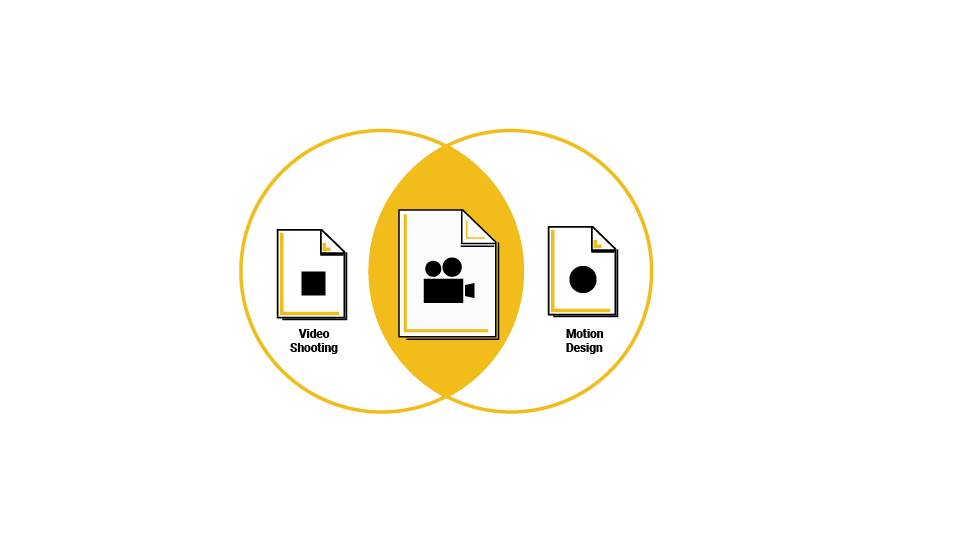How to Make Video Advertising: Example of How to Write Brief
Overview
Video advertising is a way to promote a brand or company in the market, increase its recognition, attract the target audience and increase sales with the help of video. First you need to provide detailed information about the company or brand for a detailed review before work. Perhaps there is some kind of company brand book or product description, presentations and any other materials that may be useful when creating a video clip.
Video Advertising Project Brief
This template provides a structured format for outlining the key aspects of a video advertising project, including its goals, target audience, message, branding guidelines, style preferences, technical requirements, and timeline.
| Section | Description |
|---|---|
| Project Title | [Your project title] |
| Project Description | [Brief description of the project goals and main purpose of the video advertisement] |
| Target Audience | [Description of the target audience, including demographics, interests, and preferences] |
| Message | [Key message or value proposition to be conveyed in the video advertisement] |
| Branding Guidelines | [Description of the brand's visual identity, including logo design, colors, and typography] |
| Style Preferences | [Description of the desired style (e.g., storytelling, explainer) and any specific visual or audio elements to be included] |
| Technical Requirements |
|
| Timeline | [Proposed timeline for script development, storyboard creation, filming, editing, and finalization] |
| Delivery | [Method of delivering the final video advertisement, such as email, file sharing platform, or cloud storage] |

There are several types of video advertising techniques that can be used to promote products or services. Some of the most common include:
- Pre-roll advertising: This type of video advertising appears before the main content of a video, usually on platforms like YouTube or Vimeo. It's a good option for reaching large audiences and targeting specific demographics.
- In-stream advertising: This is a similar to pre-roll advertising but it appears during the video content, interrupting the flow of the video. It's also commonly used on platforms like YouTube and Vimeo.
- Post-roll advertising: This type of video advertising appears after the main content of the video. It's a good option for targeting viewers who have already engaged with the main content.
- Outstream advertising: This type of video advertising is viewed on webpages or mobile apps and it's not necessarily linked to any video content.
- Skippable video ads: This video format allows users to skip the ad after a certain amount of time, usually 5 seconds, giving the user a choice to engage or skip the ad.
- Bumper video ads: Short video ads that are between 6-10 seconds long, they are non-skippable. They are often used to create brand awareness and recall.
- Interactive video ads: Video ads that allow the viewer to interact with the ad, for example, by clicking on links or buttons, filling out forms, or making purchases.
- Native video ads: This type of video advertising is integrated seamlessly into the platform it's displayed on, it's often used to create a more organic and non-intrusive experience.
Each of these video advertising techniques has its own unique benefits and can be used in different ways depending on the goals and target audience of a campaign.
Goals and Objectives
Video Advertising is classified according to different criteria. For example, according to the intended purpose, it can be of three types.
To set a goal, you need to determine the criteria for your video and what kind of video you need. Based on the content format, video ads are classified into two main types. Staged. Most often, it involves the implementation of an advertising script in the form of a mini-format film. However, it may look like an appeal from a specialist, a monologue, a fragment of an interview. Animated. Such advertising can look like a cartoon, motion graphics, puppet animation, and so on.
There is also an intro video that is inserted at the very beginning of other videos as a preface or greeting.
Based on promotion channels, video advertising is divided into television, Facebook, YouTube, Linkedin, TikTok and others.
The tasks are divided into three stages - pre-production, production and post-production. Tasks include developing a script, recording a voiceover and shooting a video, or developing a motion design, depending on the goals of your video. At the pre-production stage, references are selected, a concept is developed, a script is written, and a budget is formed. Production is already the direct creation of the video itself. Post-production is the finalization of the details of the video, depending on the type of video, this can be music, sound effects or finalizing the video to the desired results using motion design.
6 Best Production Management Software for Video & Film (2022)

Film and video productions are hectic! Having the right production management software sets the tone for how organized and efficient your shoot will be. Yet with so many options out there, how will find the one to fit your needs? Look no further.
Read moreTOP 10 Project Manager Tools for Videographers

When it comes to project management tools you want something that is easy to access by all team members, is affordable, and helps streamline your workflow quickly and efficiently. As a videographer, the right project management tool can help you stay on schedule, focus on the key aspects of the project, and cut out time wasted on communication issues and more. The following project management tools can assist in the planning, shooting, organizing, and execution of any video project you are working on.
Read moreTarget Audience
When creating a video advertising campaign, it's important to have a clear understanding of your target audience. The target audience can vary depending on the type of video, whether it's a commercial or non-commercial work, and where the video will be shown. Factors such as gender, age, and income level are commonly used to measure the target audience.
How to find your TARGET AUDIENCE for video marketing
What is a Target Audience? 🎯 Types & Examples!
One popular method for determining the target audience is analyzing the audience based on three main parameters: Geography, Demography, and Psychography.
Geography refers to the location of the audience, such as their city or country of residence. Demographics include characteristics such as gender, age, marital status, education, lifestyle, and average income. Psychography is divided into two sections: interests and problems. This type of analysis helps to understand the customer's interests and what problems they are facing, which can be used to tailor the video content to the target audience.
However, this method can be time-consuming. To simplify the process, many experts focus on the most relevant parameters for their business, such as demographics and location, to identify and target their audience effectively.
7 Tools to Help You Learn About Your Target Audience
Knowing your brand’s target demographics can help you create better audience profiles and reach them on the platforms and in the places they frequent most. There are a lot of ways to dig into the demographics of your current visitors and your target audience, and you may already have tools installed to start mining for information. Here are seven tools you can use to learn more about who your current visitors and customers are, as well as the audience you want to attract.
Read more8 Tools to Better Understand Your Target Audience

We read a lot in the SEO world about things like keyword research , analyzing your competitors, and other things to get traffic to your site. But I don’t see information very often about deciding who your target audience is and how to make sure your keyword choices will actually reach them. This is one way to take your keyword research to the next level, and it’s well worth the effort. So rather than trying to guess whether your SEO or PPC ads are appearing in front of the right people, here are some tools you can use to make sure.
Read moreScript
Scripting a promotional video is much more difficult than writing a short film or feature film. Indeed, here, in addition to writing talent, deep knowledge of marketing, study of the target audience and, in general, an understanding of consumer psychology will be required. In the world of cinematography, there have been strict rules about the scripts that all industry professionals work for a very long time. And these rules apply not only to cinema. Competent writers of video production studios use these rules in their work in the same way. Each structural element in the scenario has its own design type. Each scene opens under its own serial number. The type of location (interior / exterior), the name of the location and the time of day (morning, afternoon, evening, night) are indicated. Under the scene opening is a brief description of the action - what happens in the scene. Without unnecessary adjectives, comparisons, descriptions. Character names are in capital letters. The direct speech of the character is located in the center under the direct action. Notes are highlighted on a separate line in capital letters. Remarks - under the names of the characters, in brackets.
How to write copywriting brief How to write script writing briefPost-production
The video can also use various titles, effects, etc. It is also worth paying attention to when writing a brief.
Typically, the post-production stage includes the following types of work:
Video bloggers know better
Referencing is an old idea of technicalapproach to any works or investigations.

